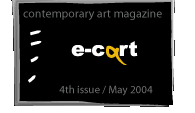


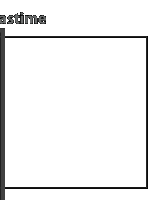

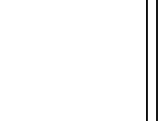



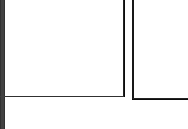


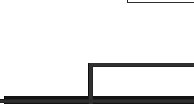
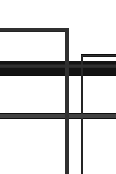

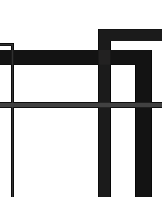


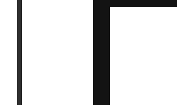
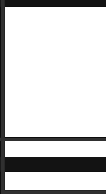



MASOCHISTIC ENJOYMENT-A VIENNESE PASTIME
Some remarks on the relation of Art and power in Austria since the 1970ies
Georg Schöllhammer
There are two buildings whose history most aptly reflects the relationship between art and power in Austria in the 1960s and 1970s: the General Hospital (AKH) in Vienna, which was commissioned in 1995, and the nuclear power plant in Zwentendorf (Lower Austria), which has never been commissioned. The former, planned in the 1960s, has become the Austrian synonym for political scandal. The latter, put in mothballs in the 1970s, has become the Austrian symbol for civil resistance. Both are symptomatic of the modernisation that took place in Austria during these two decades. They are also symptoms of the modernisation of public life from the post-war Proporz-the divvying up of jobs between the two major political parties-with its 'Great Coalition' and cosy industrial relations deals known as the 'Social Partnership' (and the aesthetic principles that so evidently evolved from them) towards a media democracy. The people who exposed the AKH scandal, one of those tangled plots in business-driven democracies that have become familiar in Austria and other countries involving public financing, the building industry, civil service despotism, political intervention, etc., now hold key positions in a media cartel unique of its type in Europe and criticise a media landscape which they themselves help to shape. The protagonists in the anti-nuclear movement evolved into a political party that has helped put an end to the two-party system and, with the Lucona affair, a new scandal in the 1980s to follow the AKH affair, also prompted renewed discussion of the role of parliamentarianism in Austria. Art and power? The AKH is a typical example in many ways. It looks like an outsize minimalist sculpture. The nuclear power plant in Zwentendorf was also minimalist in its way: an oversized projection on the concrete façade, a kind of Donald Judd parody. But Zwentendorf really stands for the mobilisation of public opinion, the restoration of a direct democratic process, critique of the risks of functionalist planning euphoria and thus also a heightened awareness of these problems in the art world as well. For a long time, by contrast, the AKH symbolised the neurotic penchant for urban renewal, and even today it remains as a metaphor for the centralistic federalism of the Austrian constitution. This high-stack warehouse for infirmity and medical equipment is the only building in which the architectural fantasies of the 1950s and 1960s have left their traces within the city. It is not in Vienna's customary brick grey: its twin structures are, in fact, black. It stands as an epitaph to the dichotomies that make up Vienna and as a response to the talk of gesture, nuance, unspoken, rusty and morbid themes out of which the myths of art were shaped until well into the 1980s. In the 1960s there were also two suicides that had far-reaching psychological effects on the avant-garde power structure in the city. Like the buildings discussed above, the actionist Rudolf Schwarzkogler and the artist Konrad Bayer became posthumous paradigmatic figures in other confrontations concerning social hegemony. Both suicides are frequently cited as indicators of the hopelessness of the aesthetic experiment and its ineffectualness in the Proporz pluralism of Austrian post-war society-even though they were probably motivated by private rather than artistic experiences. Schwarzkogler and Bayer are figureheads for the only canonised avant-garde of international stature in the history of art to come out of Vienna since the war. For a good 20 years young artists were denied access to the principal art movements in the city by the estate administrators, the closed circles of acquaintances and the co-combatants who had long become statesmen in their own right, because this rearguard was skilful enough, by pointing out the heroism of lost friends, to dismiss every other type of art, every other type of behaviour, every alien element in discussion as a short-lived trend. Paradoxically, it was its relationship to politics that heralded the end of Wiener Aktionismus. This process was marked by two court cases. The first took place in 1968: the scandal surrounding the notorious happening staged by Günther Brus, Otto Mühl and Oswald Wiener together with Peter Weibel and Franz Kaltenbäck entitled 'Art and Revolution' but commonly known as the 'Uni-Ferkelei', defecation and the theatre of destruction with insults for Robert Kennedy and other politicians resulted in six months detention for Brus and four weeks for Mühl. The happening was originally meant to take place in the Secession but its president at the time Georg Eisler, an ex-Communist and critical realist painter, declined. An official of the Socialist Students group managed to arrange for the happening to take place at the university. This lucky circumstance made it into one of the rare acts by the Austrian art scene in 1968 that was seen not as an aesthetic breach of taboo but as a political statement. If it had not been for the misunderstanding surrounding this scandal, it would possibly have been realised much sooner that the enlightened political motivation behind the German student revolt or the politics of paralysis of the situationist internationale in Paris had no place in the individualised anarchy and extreme subjectiveness of Wiener Aktionismus. The misunderstanding was taken a step further when a publication by the 'Austrian government in exile', who had been indirectly declared enemies of state, appeared in Berlin. In 1973 the opinion-forming Austrian left-wingers turned their back on Aktionismus. In Neues Forum, the liberal magazine that represented their theories, they went so far as to condemn Otto Mühl as a proto-fascist. It is possible that the commune experiment that Mühl had been attempting in Friedrichshof (Burgenland) until the late 1980s failed because, unlike his acquaintance Joseph Beuys, he favoured an absolutist concept that shunned democratic discussion and equated social behaviour with the body. The Neues Forum also contained other criticisms of Aktionismus. Women artists pointed to the manifest chauvinism of the group. Valie Export's contribution, like that of many women on the fringes of Aktionismus, was pushed aside in the retrospective hero-worship of male artists. In art circles in the mid-1970s until the late 1990s feminist Aktionismus was usually filtered out of the history of 'victorious dissidence'. Valie Export gained recognition only because of the positive reception she was accorded in America and Germany. The second court case involved a publication. In 1970 Peter Weibel published an illustrated compendium of Wiener Aktionismus in Cologne together with Export-a history-making publishing feat, which also unintentionally paved the way for the presentation of the happenings as pictorial documents for the art market. At all events, the book was banned by order of the court. As far as the relationship between political power and art was concerned, the 1970s also represented a marriage between an innovative cultural policy under Minister of Education Fred Sinowatz, for whom we have to thank the much-ridiculed 'watering-can' principle and the committees to advise politicians on art subsidies-in other words, the basis for a fruitful consensus with regard to art subsidies that is now being questioned. Artists at that time were caught in the social net of state contracts, state scholarships, state prizes and state purchases. At the same time, however, it failed to set up non-cameral art subsidy structures. Fordism attenuated by the Social Partnership, which sought and found a balance between art and church and socialism and the Maria Theresa masterclass principle at art colleges, was the reverse side of the innovative policies of the Sinowatz era. The monument that has come to symbolise this attitude was the large-scale functional sculpture Kirche by Fritz Wotruba in Vienna, completed between 1968 and 1976 which acted as a belated reminder that it was a clergyman, Monsignore Otto Mauer, whom historians credit for encouraging the Austrian avant-garde (in the gallery close to St. Stephan's Cathedral) from 1954 until the early 1970s. There was, of course, another building as well: the slaughterhouse in St. Marx, Austria's mythical representative of the spirit of 1968, albeit eight years later. It was called the 'Arena' after its occupation by activists and their struggle for an autonomous, self-administered cultural centre. It was the playground of the cultural left and drew attention to the relationship between art and power through its aesthetic and social monopolisation of a space that had been intended for commercial development. Vienna's artists at that time had many structural weaknesses to fight against. There were no powerful private organisations and foundations; compared with other European countries, there was insufficient variety on the media front; there were no satisfactory university courses in modern art; and there were no collectors willing to invest in the arts. All these shortcomings made the state into the most important structural and economic factor with regard to funding of the arts. For a long time the Republic's idea of 'culture' was openly conservative and almost feudalistic. It was not until the Kreisky era that these attitudes became more liberal, although even the 'sun king' was not particularly willing to give up the ideological control of traditional social democratic culture policies, a managerial role that had already been learnt in the First Republic. One of the greatest negative influences at this time was the absence of a systematic policy with regard to museums or, to be more precise, its replacement by an unending stream of expert reports. It even threatened to jeopardise the setting up of a new museum of modern art, a prestige project that Vienna's art scene had been craving for. It is only now, some 25 years after the first discussions and plans that a museum designed by architect Laurids Ortner is to be set up in the former imperial stables. Ever since the call for tenders was put out in 1987 some media tycoons and conservative politicians have been trying to block the museum, which is being financed jointly by the city of Vienna and the state. The result has been changes in the plan and concept and general confusion. It was only thanks to a donation by collector Peter Ludwig that Vienna, which had been promised a prestigious 'museum of the 20th century' by the government in the 1960s, was able to operate Austria's only modern art museum-in a Baroque palace of all places. Information on current trends in international art was therefore initially obtained from the church and a few galleries. Interestingly, Austria's most important art dealers were happy to talk of 'information galleries', a designation that apparently incited the cameral state structure and the Social Partners to paper over the agony of its museums through hidden subsidies to these dealers. This obscured the real power relations and potential of the art market to such an extent that even today politicians harbour illusions about its real potency. Tax, copyright and commercial law, coupled with the unrepentant taste of Austria's bourgeoisie made it even more difficult for a potent collector market to develop. As the major industries were also state-owned, the art market was short of potent(ial) capital. The situation was exacerbated by the state of art colleges: the Academy of Fine Arts was still organised essentially on the lines of a model dating from the days of Maria Theresa. The professors were all Austrians and had tenure for life. And the University of Applied Arts did not obtain a modern organisational statute until the 1970s. The recruitment policy for heads of department and masterclasses also barred the way for teachers from other countries and it was only in the mid-1980s that the 'Angewandte' experienced a brief period of ascendancy. The perforation of class-bound identity concepts by different forms of social and individual identity, the softening of boundaries between art and everyday life, the collapse of the distinction between elite and popular culture and the merging of social, style and cultural codes all flowed into the work of a post-actionist and post-punk generation of artists. Their platforms were to be found outside those of institutionalised culture: in bars, cinemas, clubs, self-managed galleries, theatre workshops, shared flats and the Falter, the only magazine at the time where artistic criticism could develop. Members of the art scene went for one of two alternatives: some artists became political, occupied houses and sought to close ranks with the Arena veterans. The other group imagined and stage-managed a worldly artistic ambience based on international models to be found in Cologne, Dusseldorf or New York. Since the art market boom in Western cities now brought international buyers to the 'information galleries', new power cartels developed around them. This boom in the art market was imported and borrowed, and when it was over many of the young players disappeared with it. Even powerful gallery owners like Peter Pakesch had to close. Before his departure into Swiss exile, Pakesch maintained that one of the reasons for his retirement was the Austrian state and its underdeveloped art policy. He said that he could not afford a Kunsthalle of his own but would continue to work with his artists, including Franz West, Heimo Zobernig and Herbert Brandl. And so the 'island Austria'-a term that in the mid-1980s even adorned the cover of a major German-language magazine-saw its domestic problems getting worse just as it was being acknowledged by the international art scene as a country with a future as well as a past. By the early 1990s, at the height of the art market crisis, the call for substitution again made itself heard, this time from the mouth of the hitherto excluded avant-garde and the dealers, whom the changeover during the boom period had made to look like major players, despite the absence of a real economic basis. The call was heeded and, what is more, with the international isolation of the Waldheim years-a situation that they had in common with the most powerful politicians and industrialists-they were also able to experience the fear that came when their personal career prospects looked to be stalled. They now took personal advantage of the good will of politicians who wished to use the adornment that artists as representatives of a cosmopolitan city would give them. The enemies of state of the 1960s had finally managed to ensconce themselves comfortably at the parliamentary aprcs-ski table and began to garner power and influence. At the same time, however, the constraints resulting from the inadequacy of legitimisation structures began to make themselves increasingly felt. Long overdue structural changes were repeatedly postpones and the interaction of public and private initiatives was never seriously discussed. Meanwhile the right-wing populist opposition was getting stronger, provoking 'art debates' which regurgitated the scandals of the 1960s. The state, represented by Minister of Art Rudolf Scholten, attempted to regain lost flexibility and speed of reaction by way of unbureaucratic interventions. Scholten's city curators, trouble-shooters for the state's cultural activities who were supposed to uncake encrusted structures by dealing directly with the producers, at least stimulated travel: a number of European and American curators, critics and artists came to Austria and helped to encourage dialogue and enliven the exhibition scene. This division of labour between the government and agitators close to the scene, albeit state-financed, was part of a policy that sought to find a balance between public and private interests and to support marginal activities. The trauma of the missing museum was attenuated to some extent through an increase in activism from another quarter. Since the mid-1980s the Secession in Vienna had been operating as an agile club for artists. Then there were the Kunsthalle, founded by the influential Social Democrat councillor for culture, Ursula Pasterk, and the work of the Generali Foundation, which sponsored quality modern art like a research museum. This balancing act continued to work for the art scene in Austria in spite of a marked deterioration in the political climate in the 1990s. Attacks on contemporary art became sharper, first because of the rise of Jörg Haider and the populist right and second because of dive-bombing by the likes of Hans Dichand, Klimt, Schiele and Kokoschka collector and publisher of the Neue Kronenzeitung, with his unremitting tirades against artists, art politicians, art dealers and the planned modern art museum. The verbal insults by both of these powerful figures were aimed at Scholten and at curators and artists whom they disapproved of. A favourite target was media artist Peter Weibel, who-as Biennale commissar for Venice, museum director in Graz, organiser of ars electronica, the Linz computer art festival, adviser on art to the Minister and professor of new media in Frankfurt and Vienna-was a representative of the very culture that he criticised with such vehemence. For right-wingers Weibel, together with Oswald Oberhuber, rector of the 'Angewandte', stood for the parvenu art scene or 'leftist art clique', as some liked to call it. From the mid-1990s onwards there was a marked reduction in the willingness to subsidise not only quality but also breadth and to provide the prizes, scholarships and project funding needed to maintain plurality and aesthetic existences outside of the mainstream. Vienna even had a ready-made metaphor for the shift in the balance of power between art and authority in the form of the Haas House by Hans Hollein on Stock im Eisen Platz, a staircased theatre that had wrapped itself in the stylish clothes of the appellative post-modern form. One of the locales in the building became a humidor in which the varied relationships between former avant-gardists and those in power were kept fresh. The demand that the master build in one of Vienna's most prominent locations had been unanimous. The government had cleared a site specially for him in the hope that this building would become what the discussions and cultural debates had promised prior to its construction, namely "an architectural attraction of a stature that has been painfully missing from Vienna in the last few decades." Not only an economic but also a political symbol. In his guide to Vienna's buildings Friedrich Achleitner had described the Haas House as follows: "It changes from the inside outwards into an instrument of striking and selective urban awareness." One of the reasons why the call for popular art and the profits that could be made indirectly from it was so strident was that the right-wing populists, who now enjoyed more than 20% of the votes, managed to turn criticism of progressive ideas on art into one of the main platforms in their neo-liberal nationalism-so much so that the Social Democrats were pressurised into giving up their protracted efforts to achieve cultural hegemony. In spite of the political polarisation and the deterioration of the subsidy situation, Vienna's art scene is probably one of the richest and most productive in Europe today. A paradox? I think not. The local pressure on producers by the state and the continuing suspicion by officials of the art scene's power, coupled with the hysterical hero-worship of a few of the big names, in whom the state invested because the market wouldn't do so, created a shift in the balance between art and power: in the early to mid-1990s a few small groups and new institutions started importing international art and theories of culture, making Austria and its capital into one of the artistic and opinion-forming centres of Europe. A strong and innovative response came in particular from groups critical of the power structures-the artists who put on an alternative exhibition in the Jänner-Galerie to the Junge Szene exhibition in the Secession in 1992, for example. Mention might also be made of the group connected with the magazine Vor der Information, which was very quick to address migration and globalisation issues. On the market side it was once again up to galleries like Metropol to bring the new art, with its criticism of institutions, to Vienna in the early 1990s. On top of this was a flourishing and continuously expanding club and Electronica scene and the attractiveness of the New Media. Many of the curator initiatives, the Depot and art magazine springerin slotted into the critical power positions in this art scene and, like Public Netbase gradually occupied small offices and showrooms in the stables of the old Messepalast. This activism, built on precarious contracts, was possible because the start of construction in the Museumsquartier was repeatedly postponed because of political disagreements. In this way, peripheral culture was able to occupy space in the city centre, setting up a glacis used opportunistically by politicians to upgrade the image of the area and to set it up as a publicly acclaimed urban metaphor for moderate state intervention. Complex configurations of this type make it especially difficult in Vienna to distinguish between state, non-state, private and alternative structures and to define the field within which to draw the line between affirmative and countercultural activity. This might be of questionable democratic validity because it naturally creates a system of mutual dependency, which weakens the critical faculties of the art scene, making it more difficult to classify and, in particular, to distinguish between discursive and material instruments and to position the ethics of money within the art scene. The change in the role of artists, whose work no longer focuses on awareness, the quality of physical and sensory perceptions and concepts of space, but on ways of dealing neatly with the objective world, the specificity of the local scene and the ability to step back from the defining institutional and power system in which the artists work, has not yet been communicated to the public. Allowing for the rapid change in the relationship between the state and artists that is taking place at the moment, however, the aesthetic sphere of art and art circles is a multicontextual field that relies just as much on the participation of its protagonists in subnational, cross-national and supranational groups as it does on the resources of the state. In a space in which different and unequal power relationships develop, clearly defined work spheres can, of course, no longer exist intrinsically or extrinsically. The loci are formed by cultural, economic, ethnic, technological and media constructs. Communities come together within hierarchically organised spaces and unequal power spheres. They are charged with an identity that has less and less to do with the real world; at the same time, the traditional physical interaction with local reality is being replaced increasingly by an artificial one. And yet there is still a residue of the old structure of art and power, as has been briefly sketched here, in the various temporary civic initiatives: it is the masochistic enjoyment of the status quo, in other words the state, and the immediacy of its actions.
This text was published in the catalogue "Formate", in the frame of the "Vienna Days in Bucharest" (German and Romanian version) and in the newspaper edited in the same frame by Lia Perjovschi.
|
|
|
|||||||||||||||||
|
|
 |
 |
|
|||||||||||||||
 |
|
 |
|
|||||||||||||||
 |
|
|
||||||||||||||||
|
|
 |
 |
|
|||||||||||||||
 |
 |
 |
|
|||||||||||||||
 |
|
|||||||||||||||||
| |
|
 |
|
|
||||||||||||||
 |
|
|||||||||||||||||
|
|
|
|
|
|||||||||||||||
|
|
 |
 |
|
|||||||||||||||
|
|
|
|||||||||||||||||
| |
|
|||||||||||||||||
|
|
 |
|
|
|||||||||||||||
 |
|
|||||||||||||||||
|
|
|
|||||||||||||||||
 |
|
|||||||||||||||||
 |
 |
|
||||||||||||||||
 |
 |
|
||||||||||||||||
 |
|
|||||||||||||||||
|
|
|
|
|
|
|
|
|
|
|
|
|
|
|
|
|
|
|
|